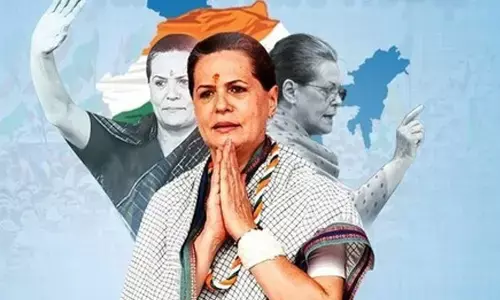Thalinomics to gauge inflation gaining ground

Thalinomics to gauge inflation gaining ground
Thalinomics found its place in India’s economic lexicon in 2020 when the Economic Survey made it into an inflation indicator.
Thalinomics found its place in India’s economic lexicon in 2020 when the Economic Survey made it into an inflation indicator. The price of thalis was calculated over the years to show how Indian households had benefited from lowering prices of essential food products ranging from edible oils to foodgrain and vegetables. The common man’s thali has once again caught the imagination of investment rating agencies, which are highlighting the impact of thali prices on a household’s daily expenditure.
Credit Rating Information Services of India Limited (Crisil) has delved into what is being described as a Roti Rice rate analysis. It has investigated prices of not just food products but items such as cooking gas that determine the final price of a thali in various parts of the country. The data is showing a decline in prices of both vegetarian and non-vegetarian thalis since last October. The non-vegetarian thali prices have fallen from Rs. 62.7 in October to Rs. 58.3 in April this year. The vegetarian thali has similarly declined from Rs. 29 to Rs. 25. Yet the price of these thalis has risen on a sequential basis in May. The increase is attributed by the agency largely to rise in wheat prices but also to an incremental increase in rice and pulses prices. Broiler rates, however, have risen on a year on year basis by only two per cent, limiting the hike in cost of the non-veg thali.
The idea of referring to a thali is a novel concept and covers most of the essential goods used by a household for making a meal. But whether it can really determine the cost of living for the common man is questionable. Firstly, households across the country vary widely in their daily diets. Apart from the shifts in grains consumption from wheat to rice as one moves from the north to south, areas consuming millets also need to be taken into account. For instance, Gujarat, Maharashtra and Karnataka have a higher consumption of these coarse grains. Edible oils, vegetables, cooking fuels – also differ widely from region to region and equally from rural to urban areas. Second, the size of the thali is also elastic depending on the consumer. Manual workers would typically have a heavy meal - which was highlighted in the thalinomic premise – and their thali would have larger portions than others.
Similarly, the type of non-vegetarian items on a thali will also depend on the location. The western parts of the country as well as coastal areas have seafood as a staple diet. The southern region, on the other hand, seems to have a focus on mutton while northern India is certainly broiler country.
The diversity in menus across the country may make it somewhat difficult to evolve a common thali and thus finalise pricing. The Roti Rice rating is an innovative move by the ratings and the analysis agency to gauge the impact of fluctuations in basic goods on an average household. The study apparently does try to accommodate the price variations in different parts of the country as it notes that the average thali cost is calculated on input prices prevailing in north, south, east and west India. According to Credit ratings and analysis agency, Crisil, the ingredients covered are cereals, pulses, broilers, vegetables, spices, edible oils and cooking gas.
One can call it broadly representative but not fully reflective of the diversity in basic food products and cooking fuels in different regions. The impact of price fluctuations in food is enormous given that it has a weightage of as much as 46 per cent in the consumer price index. Fuel and electricity account for about nearly eight per cent. So the thali covers about 54 per cent of the goods in the CPI, and can thus be viewed as a quick indicator of inflationary pressures on the general public.
At the same time, it cannot be denied that there are other critical areas that weigh heavily on the common man’s budget. These include transport and medical care. In fact, any serious illness can skew planned household expenditure for months at a time. The huge
impact of transport costs can also be seen in the importance now being given to provision of free women’s transport by political parties in election manifestos. The trend was set in Delhi where women were given the benefit of free bus travel. The same offer has been given in Karnataka by the Congress, which has formed the new government, and is expected to implement its promise. Other cost elements are also part of the family budget but these are major chunks of expenditure.
The concept of a thali to gauge the impact of food prices on the common man is thus an interesting one. It may not fully capture the effect of inflation but is worthwhile to see the effect of price fluctuations at the retail level.
Clearly thalinomics is beginning to play a wider role in discussions about inflationary pressures on the economy.


















